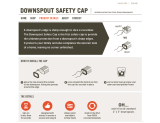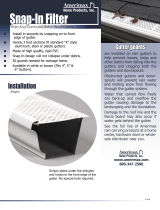
nVent.com | 19
Insulation Resistance Test (Megohmmeter)
Frequency
Insulation resistance testing is recommended at four stages during the installation
process and as part of regularly scheduled maintenance.
• When received
• After the cables have been installed
• Prior to initial start-up (commissioning)
• As part of the regular system inspection
• After any maintenance or repair work
* Under adverse weather conditions, or when the tails or terminal connections have
evidence of moisture, lower insulation resistances may be encountered. Wipe tails, face
of pot, and all terminal connections with a clean dry rag to eliminate moisture and retest.
Test Criteria
The minimum insulation resistance for a clean, dry, properly installed circuit should
reflect the values shown above, regardless of the heating cable length. The insulation
resistance test is critical to ensure the safety and reliability of the heating cable system.
This test should be performed as part of the installation of the system, and is useful for
troubleshooting an installed system.
WARNING: Shock or Fire Hazard. Disconnect power to all circuits prior to testing.
Using a megohmmeter, test insulation resistance at three voltages—500, 1000, and
2500 Vdc. Significant problems may not be detected if the insulation resistance is tested
only at 500 or 1000 volts. First, measure the resistance between the heating cable bus
wires and the Grounding braid; then, if the heating cable is installed on a metal gutter,
downspout, and/or metal roof, measure the insulation resistance between the braid and
the metal surface.
Procedure
1. Disconnect all power to the heating cable, thermostat, and contactor.
2. Set test voltage at 0 Vdc.
3. Connect the negative lead (–) to the heating cable metallic braid.
4. Connect the positive lead (+) to both heating cable bus wires.
5. Turn on the megohmmeter and set the voltage to 500 Vdc; apply the voltage for 1
minute. Record the resistance.
6. Repeat step 5 at 1000 Vdc and 2500 Vdc.
7. Turn off the megohmmeter.
8. If the megohmmeter does not self-discharge, discharge phase connection to ground
with a suitable grounding rod. Disconnect the megohmmeter.
9. If the heating cable is installed on a metal roof, metal gutter, or metal downspout,
repeat these steps with the negative lead (–) connected to the grounding braid and
the positive lead (+) connected to the metal roof, gutter, and/or downspout.
10. Reconnect the thermostat or contactor and reenergize the circuit.
Insulation Resistance Criteria
A clean, dry, properly installed circuit should measure thousands of megohms, regardless
of the heating cable length or measuring voltage (0–2500 Vdc). The following criteria
are provided to assist in determining the acceptability of an installation where optimum
conditions may not apply:
• All three insulation resistance values should be greater than 100 megohms.
• Insulation resistance values for any particular circuit should not vary more than 25
percent as a function of measuring voltage.
• Reading must be steady at measuring voltage.
• If any of the above conditions are not met, consult the “Troubleshooting” instructions.






















